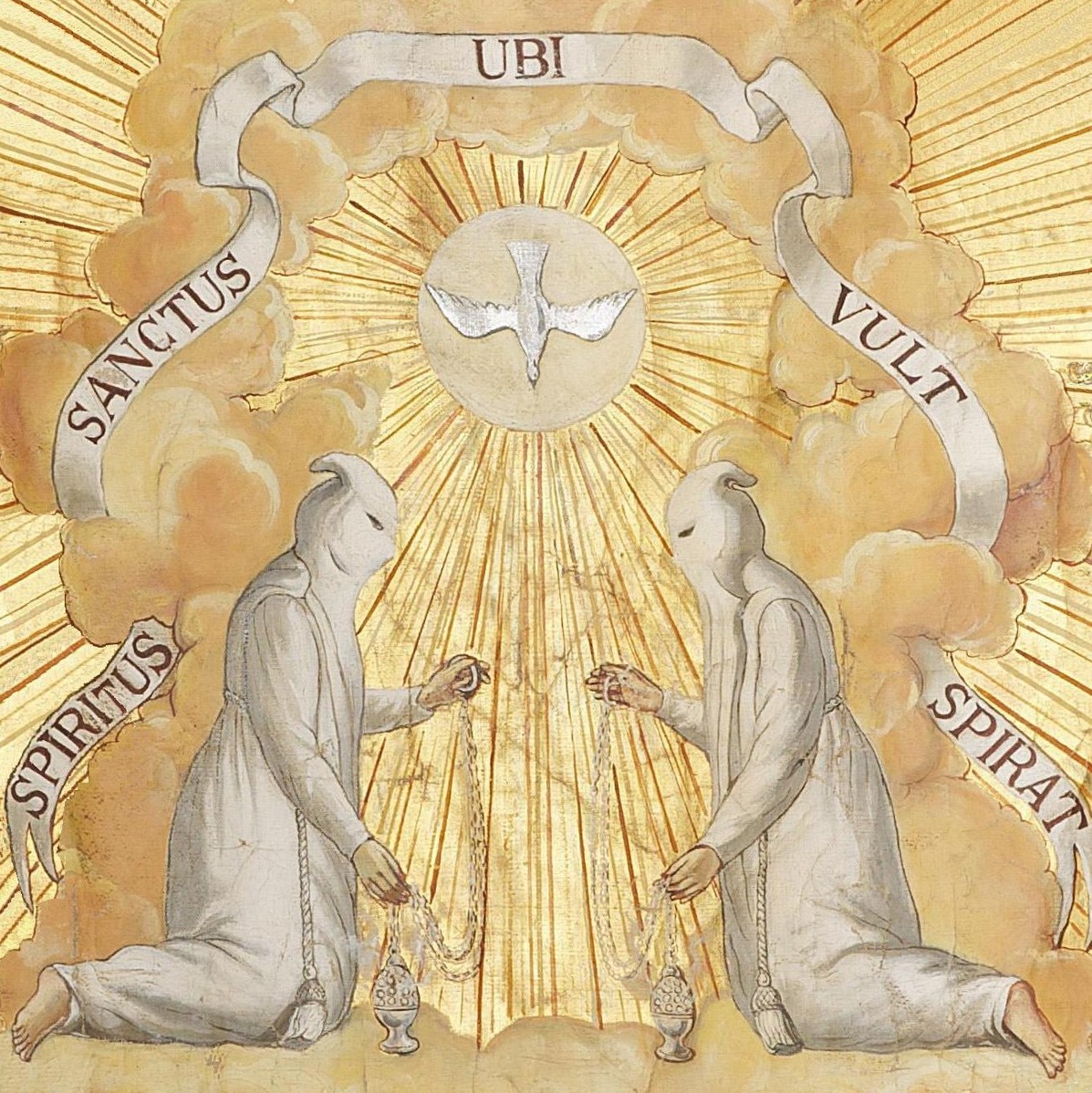

THE CHAPEL OF THE WHITE PENITENTS IN MONTPELLIER
.jpg)
The Chapel of the White Penitents is situated in the heart of old Montpellier. Dedicated to Saint Foy, virgin and martyr of the 3rd century, it is without doubt the most ancient sanctuary in the city. Its origin, like that of the Confraternity, extends back to 12th century and is linked to a visit to Montpellier, to 1220, by Saint François of Assisi and Saint Anthony of Padua in 1230.
The Chapel, which was destroyed in 1568 during the Religion War, left to this day nothing but the old edifice, linked to the façade by an arch at the Jacques-Coeur hotel.
Hunted by the Protestants, the Penitents were forced to find a new location for their mass. This led them first to the Dominican church, in the cave of the cloakroom (below the Place de la Canourgue,) at the Church of the Holy Cross (destroyed in 1621,) and later, in 1623, to the chapel of the Palace. The Confraternity found their original chapel following a ruling issued the 26th September 1623, through which Lord Fenouillet, bishop of Montpellier, returned them the ruined chapel, in whose reconstruction began the following year.

In 1632, the King of France (Louis XIII) and his wife (Anne of Austria), assisted along their passage through Montpellier, in the Choir of the Penitents — then situated where the present gallery is located, over the large door — during the first Sunday service in October and at the vespers.
Between 1651 and 1655, the chapel welcomed clergy from Notre Dame des Tables, which worshipped during the reconstruction of the church which was demolished, like the others, by the Protestants.
Under the Revolution, the chapel Saint Foy, sold as national property, fell into disuse and was transformed into a shop for fodder.
Bought over again by the Confraternity the 10th Prairial, Year XII, the chapel was opened for mass by imperial decree in the 13th Germinal, Year XIII, thanks to the intervention by the Arch-chancellor Cambacérès, former prior of the Confraternity (1790.)
During the period consecutive to the law separating Church and State, the public powers attempted to inventory the Chapel on the grounds that it was just a simple “emergency chapel” of Notre Dame des Tables’ parish and hence that it belonged to the category of a public establishment suppressed by the new legislation. The Confraternity, which was able, to produce property titles and to demonstrate the private nature of the building, was eventually able to conserve its complete autonomy and to preserve its original allocation.
Since then, the Chapel Saint Foy has not ceased to be a place of prayer and Christian activities. It shelters the Confraternity of the White Penitents, amongst which belong certain well-known personalities (aside from Cambacérès, the Cardinal of Cabrières and Frédéric Mistral.) This Confraternity consists, at present, of approximately fifty members who work hard to continue the heritage of their predecessors: worship, charity and the maintenance of the crosses in the city.
After its reconstruction in 1624, the Chapel Saint Foy was left with an interior which was totally bare and seemed, thus, according to the chroniclers of the time, akin to “a sort of vulgar warehouse, possessing the form of a parallelogram in which all its ornamentation was in the whiteness of its walls and the nudity of its structure.”
The decoration thereafter was conceived by architect Augustic Daviler, creator of the garden of Peyrou and its Arch of Triumph, and was realized in a progression fashion between 1641 and 1701. This comprises of, essentially:
Paneling and sculptures in gilded wood, works of art by the sculptor Subreville, especially the low relief dressing the terraces of the high altar, surronded by the four columns supporting the archway and the statues of Saint John the Baptist and of Saint Mary-Magdalene placed on both sides of the stained-glass windows which illuminate the Choir.
Numerous picturesque works of art, among which are the monochrome medallions by Antoine Ranc ornamenting the frieze that overhangs the Choir and the elevated part of the lateral walls, as well as the canvasses which cover the ceiling compartmentally, which originates from two Montpellierian painters Paul Pezet and Simon Raoux and retrace—in the spirit of the Counter Reform—to the life of our Lord Jesus Christ. Since then, nine of these canvasses have most unfortunately disappeared.
Various paintings (19th century) most of relatively recent, which decorate the lower portion of the northern and southern walls:
To the left (northern face, side of the pulpit to preach): Saint Louis in prayer before the relics of the Passion (gift from the Sacristins in 1817,) Saint Jerome in the desert by Jacques Molinier, Saint John the Baptist by Baumas, Christ on the Cross (below the pulpit,) the Repose of the Holy Family and the Piety.
To the right: from the high altar (northern face,) Louis XIII’s vow by Jean-Jacques Reynes, the Samaritan, Saint Genevieve (18th century), the symbol of Mary (18th century) and the Descent from the Cross by Osian Tandon
These works form a coherent whole of artistic richness of which the Chapel has earned the nickname “Languedoc’s Sistine” and justifie its classification, on 17 February 1995, as a Historic Monument.
The restoration forced upon us due to the progressive degradation of the building and works of art will prove to be long and costly; however, it is crucial that one of the most precious elements of our city’s religious heritage be preserved, and, on top of that, that a place of worship will always be present and active despite the difficulties which have marked the Confraternity of White Penitents’ long history in Montpellier.
DEVOTE ET RESPECTABLE CONFRERIE DES PENITENTS BLANCS DE MONTELLIER, CONSERVATRICE DES CROIX PUBLIQUES DE LA VILLE
